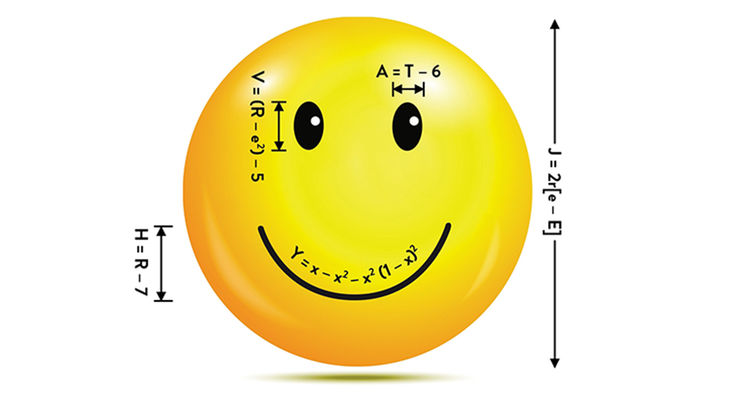How to be happy? Mo Gawdat on The Happiness Equation
Have you ever wondered what happiness really is, or how we can become happy? Here, Mo Gawdat explains what happiness is and how it can be achieved with his Happiness Equation.

In current circumstances, it can be hard not to feel overwhelmed and easy to forget to find happiness in the little things. We all want to be happy. However, whether you've lost a loved one, been through a relationship break up, experienced a career setback or you're simply struggling to deal with current events, happiness can often seem unattainable. In Solve for Happy, Mo Gawdat shares his equation for happiness and explains how we can adapt our thinking so that happiness becomes our default state. In this extract, Mo explains what happiness is, and how you can achieve it with the Happiness Equation.
What Is Happiness?
At my lowest point, back in 2001, I realized that I would never restore the happiness that was my birthright if I didn't at least know what I was looking for.
So, being an engineer, I set out to develop a simple process to collect the data I needed to determine what made me happy. First, though, I hesitated because the technique was so simple it seemed almost childish. But then it occurred to me: if our model for the default condition of human happiness is the infant or toddler, maybe “childish,” or at least “childlike,” is not such a bad thing.
I started by simply documenting every instance when I felt happy. I called it my Happy List. You might want to do the same thing. In fact, why not take a moment right now, pull out a pencil and a piece of paper, and jot down some of the things that make you happy. As assignments go, this one's not too tough. The list can be nothing more than a string of short, declarative sentences that get right to the point and complete the phrase “I feel happy when ________________________.”
Don't be shy. There's no reason to feel inhibited because no one ever has to see your list. You can include the obvious stuff, like scratching your dog under her chin or watching a
beautiful sunset, and simple things like talking to your friends or eating scrambled eggs. There are no wrong answers.
Write as many as you can think of. When you're done, at least for the first pass, go back and
highlight a few items that, if you were forced to set priorities, would be at the top of the list of things that make you happiest. Those will make for a valuable short list that will prove useful in our later discussions.
Here's some good news already: the very act of creating your Happy List makes for a very happy experience, so much so that, when you're finished, you should feel energetic and refreshed. I work on my list at least once a week, adding new things. Not only does it put a smile on my face, but it helps me cultivate something that psychologists say contributes to happiness over the long haul: an attitude of gratitude, which happens when you acknowledge the truth about our modern lives and the fact that there is plenty to be happy about after all.
So go ahead and enjoy. I'll go make a cup of coffee and wait for you. (By the way, I feel happy when I enjoy a quiet cup of coffee!)
The Happiness Equation
My hunch is that your list consisted almost entirely of ordinary moments in life—a smile on your child's face, the smell of warm coffee first thing in the morning, the kinds of things that happen every day.
So what's the problem? If the triggers for happy moments are so ordinary and so accessible, why does “finding” happiness remain such a big challenge for so many people? And why, when we “find” it, does it so easily slip away?
When engineers are presented with a set of raw data, the first thing we do is to plot it and attempt to find a trend line. So let's apply this to your Happy List and find the common pattern among the different instances of happiness on it. Can you see the trend?
The moments that make you happy may be very different from the moments that make me happy, but most lists will converge around this general proposition: Happiness happens when life seems to be going your way. You feel happy when life behaves the way you want it to.
Not surprisingly, the opposite is also true: Unhappiness happens when your reality does not match your hopes and expectations. When you expect sunshine on your wedding day, an unexpected rain represents a cosmic betrayal. Your unhappiness at that betrayal might linger forever, waiting to be relived anytime you feel blue or hostile toward your spouse. “I should have known! It rained on our wedding day!”
The simplest way for an engineer to express this definition of happiness is in an equation—the Happiness Equation.
Which means that if you perceive the events as equal to or greater than your expectations, you're happy—or at least not unhappy.
But here's the tricky bit: it's not the event that makes us unhappy; it's the way we think about it that does.
In Solve For Happy Mo Gawdat explains how to change your thinking and adapt your expectations to achieve enduring happiness.
Solve for Happy
by Mo Gawdat
Written by a top Google executive, Solve For Happy is about creating and maintaining happiness. In 2001 Mo Gawdat realised he was incredibly successful, but desperately unhappy. He committed to solving the problem like the engineer he was, examining the facts and following logic. Ten years later his research saved him when his son Ali died during routine surgery, and he realised his mission was to share his Happiness Equation with the world.



